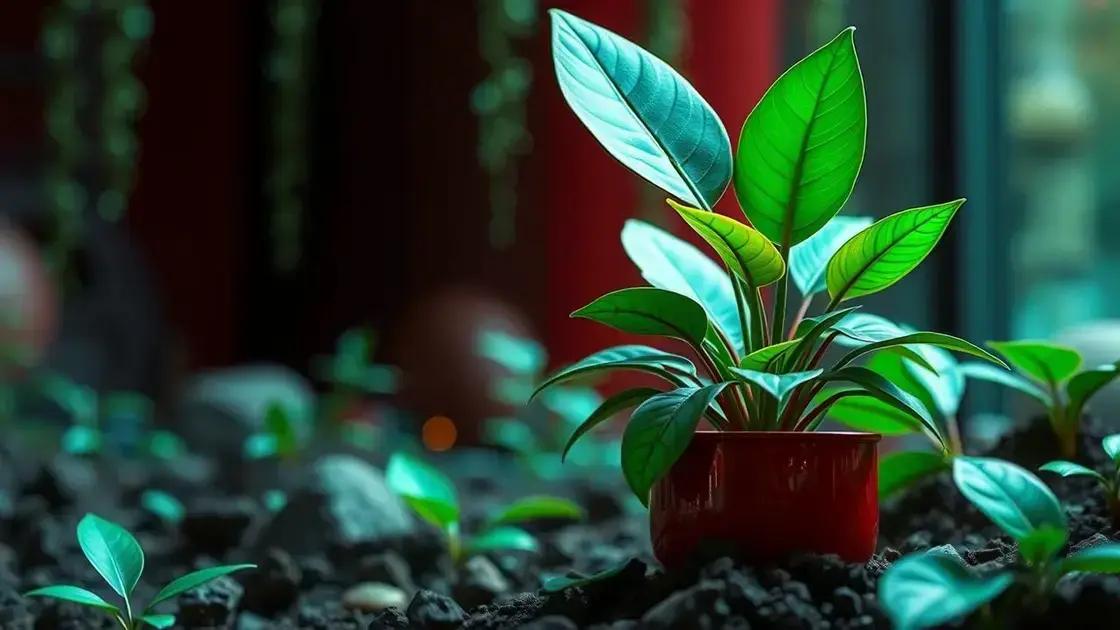How to Care for a Baby Rubber Plant: 5 Essential Tips for Success
How to care for a baby rubber plant can be a delightful journey for new indoor gardeners. These charming plants not only beautify your space but also serve as a rewarding hobby. To help you nurture your leafy friend, we’ll explore essential tips to keep your baby rubber plant thriving and growing.
Table of Contents
ToggleChoosing the right potting mix for your baby rubber plant
Choosing the right potting mix for your baby rubber plant is crucial to its health and growth. Selecting a proper potting mix not only enhances drainage but also provides essential nutrients. Here are some key factors to consider:
Understanding soil components:
- Peat moss: A valuable component that retains moisture while providing aeration.
- Perlite: A lightweight additive that improves drainage and prevents soil compaction.
- Compost: A natural fertilizer that enriches the potting mix with nutrients.
For optimal results, consider blending these elements in the following ratio:
| Component | Ratio |
|---|---|
| Peat moss | 50% |
| Perlite | 30% |
| Compost | 20% |
A well-balanced potting mix aids in water retention and ensures proper drainage, preventing root rot. When repotting your baby rubber plant, it’s also important to select a pot with drainage holes to allow excess water to escape.
Additionally, ensure that the potting mix is formulated specifically for indoor plants, as they often require different nutrient balances compared to outdoor soils. Exploring indoor gardening techniques can also provide useful insights on maintaining a healthy environment for your rubber plant.
Common mistakes to avoid:
- Using garden soil, which can be too dense and lead to poor drainage.
- Neglecting to amend the soil with compost or nutrients, which can stunt the plant’s growth.
- Overwatering, which can occur if the soil retains too much moisture.
In conclusion, by carefully choosing the right potting mix and avoiding common pitfalls, you’ll set your baby rubber plant on a path to robust health and growth.
Understanding light requirements for rubber plants

Understanding light requirements for rubber plants is essential for keeping your plant healthy. Proper lighting ensures robust growth and vibrant leaves. Rubber plants thrive best in bright, indirect sunlight.
The importance of light exposure:
- Encourages healthy leaf development.
- Promotes strong, upward growth.
- Prevents leggy growth and off-color leaves.
When deciding on placement, consider the following light conditions:
| Light Condition | Best For |
|---|---|
| Bright, indirect light | Optimal growth and leaf color |
| Partial shade | Growth but slower; more frequent care needed |
| Direct sunlight | Can scorch leaves; use caution |
It’s essential to rotate your rubber plant periodically to ensure even light distribution. This helps avoid uneven growth and allows all sides to receive light.
Common questions about rubber plant lighting:
- What happens if my rubber plant gets too much light?
Excessive light can lead to leaf scorch, brown edges, and overall damage. - What if my plant isn’t getting enough light?
Insufficient light may cause the plant to become leggy or drop leaves.
For further assistance, consider exploring indoor gardening techniques that will guide you on maximizing your rubber plant’s growth.
In summary, understanding the specific light requirements for rubber plants will significantly enhance their growth potential and overall health. Ensure you create a suitable environment for your leafy companion.
Common mistakes to avoid with baby rubber plants
Common mistakes to avoid with baby rubber plants can significantly impact the health and growth of your indoor garden. Proper care is essential to keep these plants thriving. Here’s what to watch out for:
Overwatering issues:
- Too much water can lead to root rot.
- Always ensure the pot has drainage holes.
- Check soil moisture before watering.
Another common pitfall involves insufficient light:
Not providing adequate light:
- Rubber plants need bright, indirect sunlight.
- Leggy growth occurs from lack of light.
- Scorched leaves may appear with too much direct sun.
Here’s a quick summary table of common mistakes:
| Mistake | Consequence | Solution |
|---|---|---|
| Overwatering | Root rot and drooping leaves | Water only when the top inch of soil is dry |
| Low light | Leggy growth and leaf drop | Place in bright, indirect sunlight |
| Neglecting humidity | Brown leaf tips | Maintain humidity levels above 40% |
Another aspect to consider involves not repotting:
Failing to repot when necessary:
- Rubber plants can become root-bound.
- Repotting helps refresh the soil and provide space for growth.
In summary, by avoiding these common mistakes, you can ensure your baby rubber plant thrives. For more tips, you can continue exploring indoor gardening techniques.
In conclusion
Caring for a baby rubber plant is a rewarding experience that requires attention to detail and a willingness to learn. By understanding how to choose the right potting mix, meeting their light requirements, and avoiding common mistakes, you’ll be well on your way to cultivating a vibrant and healthy plant. Remember that each rubber plant is unique, so pay close attention to its specific needs. For further tips on enhancing your indoor garden, check out tips on enhancing your indoor garden.

